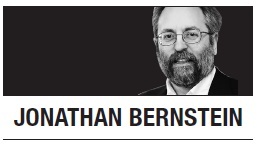The most important single thing to know about Donald Trump’s approval ratings after his first month of the presidency is ... there is no one single thing. Both the measurement and importance of presidential approval are complicated subjects, with wide ramifications for both governing and future elections. So here‘s a start on getting up to speed on Trump and his approvals:
He’s easily the least popular president one month in of the polling era, and likely the least popular president ever at this stage. Looking at the polling aggregators, HuffPollster has him at 43 percent approval, 51 percent disapproval. That’s not very far above Barack Obama’s worst numbers ever, and in fact Trump managed to equal Obama‘s worst-ever Gallup approval one day this weekend before climbing back up a bit.
Most Republicans approve of what Trump has done so far. That’s no surprise; as Seth Masket points out, most Democrats stuck with Barack Obama going into the 2010 Republican landslide, and a fair number of partisans never abandon their party‘s president no matter what.
Trump’s strong supporters still support him, which is also no surprise. We should be a bit cautious, however, of the on-the-scene reporters who interview these strong supporters. Voters who are disappointed in the candidate they supported will often forget about that previous support, or at least recast it as containing more hesitation than it did on Election Day. Campaigns, after all, are particularly efficient at convincing mild supporters to become, temporarily at least, enthusiastic -- that‘s how electioneers get people to actually show up at the polls.
The 45 percent or so who approve of Trump are not a monolithic bloc. A CBS News poll approaches his in an interesting way, breaking down both supporters and opponents into two groups: Die-hards and those with softer views. Even there, I wouldn’t assume these are fixed groups. If things begin to go well for the administration, some of what CBS calls “conditional” supporters will turn into “believers,” and people will move the other direction if things go badly. But not everyone: No president has had approval ratings dip below 20 percent, and at 25 percent approval there will still be millions who believe Trump is doing a great job.
Terrible approval rates will limit the president‘s governing influence. As the late presidential scholar Richard Neustadt said, presidential popularity tends to push others in the governing process to give the president the benefit of the doubt. Whether we’re talking about House Republicans choosing whether to bring presidential priorities higher on their agenda, potential executive branch nominees deciding whether to take a job, Democratic opinion leaders calibrating how far they can go in attacking Trump, bureaucrats deciding whether to leak harmful stories, or even judges hearing cases important to the administration, that benefit of the doubt might be very important.
They will also hurt his party in the 2018 midterms. Even if Trump recovers by the final run-up to the elections in eighteen months or so, a fair portion of the 2018 results will be locked in soon as potential candidates choose whether or not to run, based in part on the president‘s popularity and its expected effects. That’s happening right now, especially for Senate and governor contests. Partisan differences in enthusiasm and confidence will also affect how resources flow (or don‘t flow) into campaigns. And then turnout and vote choice can be directly affected by presidential popularity, as well.
They also put Trump’s re-election in jeopardy. That‘s true even if most of his supporters stick with Trump. After all, even if Trump keeps all the voters he had in 2016, he’s still not assured of winning, given that he finished with only 46 percent of the vote, about 3 million fewer votes than his Democratic opponent, and a narrow Electoral College victory. Either a slight uptick in Democratic voting turnout or better consolidation of the anti-Trump vote would doom him in that case. Even that depends on Trump retaining the votes of a crucial group who voted for him despite not liking him, some of whom appear to be contributing to his low approval numbers and are not guaranteed to find the next Democrat as distasteful as they found Hillary Clinton.
As many presidents gain support in their re-election bids as lose it. Nor do presidents need to stay popular throughout their first terms in order to win a second one. Barack Obama, Bill Clinton and Ronald Reagan all spent plenty of time below water in their first terms (that is, with disapproval higher than approval) but recovered to win second terms -- quite easily, in the case of Clinton, and in a landslide, for Reagan. On the other hand, all three of them were hurt early in their presidencies by slumping economies, and their approval ratings and re-election prospects improved as the economy improved. Trump has managed to go under water despite a low unemployment rate.
There‘s still plenty of time for him to recover, but his terrible public-opinion start is already hurting him, and is at least a significant warning sign for the future.
By Jonathan Bernstein
Jonathan Bernstein is a Bloomberg View columnist. — Ed.






